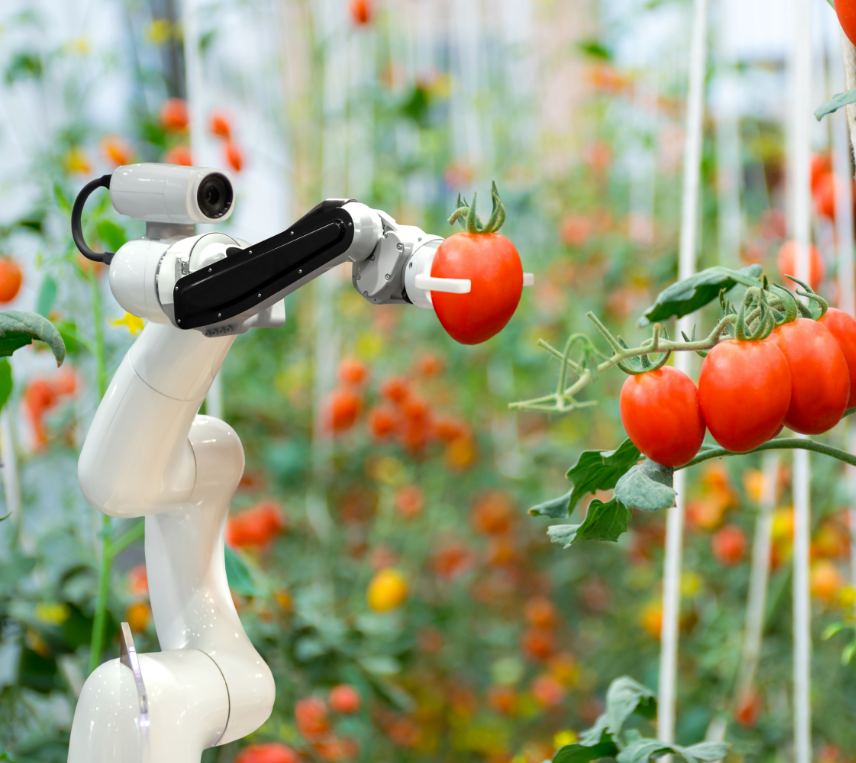KANSAS CITY — In the year ahead, consumer trends triggered by the coronavirus pandemic are expected to continue, driving further innovation in food production and distribution. Startups tackling key issues in the supply chain are capturing investor attention, said Anne Greven, global head of food and agribusiness innovation and the FoodBytes! platform at Rabobank, New York.
“The pandemic fundamentally exposed the fragility of the food system,” Ms. Greven said. “As a result, it really helped validate the need for real innovation and real investment. Whether it was corporate direct investment or special venture funds, we saw a lot more money moving toward entrepreneurs who are really solving big problems in the food system.”
Deal activity accelerated as the impact of the initial outbreak stabilized. In 2020, funding to food and beverage startups increased 75% year-over-year to $5.6 billion, said Jake Matthews, senior intelligence analyst at CB Insights, New York.
“The COVID-19 pandemic has dramatically accelerated investment in the food and beverage space,” Mr. Matthews said. “Alternative protein companies have been the biggest driver of these trends as sustainability and supply chain resiliency come into greater focus.”

Plant-based meat alternatives gained traction during the pandemic as widespread worker illness at meat processing plants led to temporary shortages of beef, pork and poultry. Just over half of US and European consumers have tried plant-based meat since the onset of the outbreak, and 63% of those became repeat users, according to a survey by UBS.
“The consumer’s perception is that having a plant-based diet is healthier and better for the environment,” Ms. Greven said. “I still think there’s space for good quality alternative proteins that appeal to the consumer.”
Mr. Matthews predicted grocery retailers will expand their alternative protein assortments in 2021.
“With the COVID-19 crisis highlighting the food system’s vulnerabilities, grocers will continue to increase their focus on this category, and consumer adoption of plant-based meats and other alternative protein products will continue to grow,” he said. “2021 will be a breakthrough year for cultured meat and protein fermentation. We will see more investment and greater commercialization of these alternative protein products in the year to come.”
Bennett Cohen, partner at Piva Capital, San Francisco, expects alternative seafood will be the “next wave in the clean meat movement,” reeling in investment in 2021 and beyond.
“Due to continued traction in plant-based meat alternatives for pork, chicken and beef, it will become increasingly hard for startups to differentiate from an already packed shelf and stand out of a crowded market,” Mr. Cohen said. “However, there is still white space for new food tech entrants in the seafood sector, where startups have more opportunities to own a product category, such as shrimp, salmon or crab.”
Several experts expect to see increased investment in technologies that automate production and delivery as labor challenges persist across the food and agriculture industries.
“As more US farmers continue to battle devastating labor shortages, a problem exacerbated by COVID-19, expect to see a rise of autonomous robots in agriculture augmenting human effectiveness and driving efficiency in farming,” said Julia Reichelstein, an investor at Piva Capital. “While the technology is nascent, advanced computer vision and new prototypes will soon drive robots through farming fields amidst tough weather, treacherous mud and even pesky bugs. With these advancements, robots will be able to perform a number of once-manual tasks, from weeding to harvesting, especially taking a first hold in high-value specialty crops. Driven by AI technology gains and customer urgency, we’ll start to see a rise in VC funding in this area.”
Ms. Reichelstein also forecast a surge in food traceability solutions as consumers demand more sustainable products with climate change increasingly a priority.

“Because of this demand, new technology companies with advanced smart tracking and data analytics capabilities will bubble to the surface, working with farmers and providing direct food intelligence to consumers, restaurants and grocery stores,” she said. “While consumers may not have a high willingness to pay for traceability alone, there will be more traction with corporates and large-scale buyers, especially those with net-zero emissions targets.
“Although it may not be viable to place a biometric sticker on every single fruit or vegetable, new innovative solutions such as edible bio-tracing could bring breakthroughs, driving cost down and usage up. Expect to see an increase in funding to those startups that can solve this challenge of food traceability on a larger scale in 2021.”
Health and wellness products are expected to gain greater relevance as consumers continue seeking food and beverage brands promoting immunity benefits, relaxation and stress relief.
“As the current crisis of the pandemic continues to introduce more stress and anxiety into our lives, mental health wellness will become a key priority for food companies in 2021,” said Jonathan Hua, an investor at Scrum Ventures, San Francisco. “Consumer demand for healthy food and beverage products that can improve mood, immunity and overall mental health will see an unprecedented spike.”
The popularity of functional ingredients may continue to rise even after COVID-19 fades. Ms. Greven said the aging boomer population will drive demand.
Another trend supercharged by the pandemic, e-commerce will continue to grow across categories, according to Coefficient Capital, New York, which predicted large corporate buyers will acquire direct-to-consumer brands at higher multiples. Consumers who shopped from a food or beverage brand website cited such reasons as better quality, better selection, better customer service and personalization, according to Coefficient Capital.
“With food ‘at home’ exceeding food ‘away from home,’ and e-commerce representing a growing share of grocery sales, we will see increased M&A deal activity among DTC food and beverage brands looking to ‘unbundle’ the shopping cart,” Mr. Matthews said.
"Consumer demand for healthy food and beverage products that can improve mood, immunity and overall mental health will see an unprecedented spike." — Jonathan Hua, Scrum Ventures
Large packaged food companies seeking to sustain top-line gains achieved in the past year due to the shift to at-home consumption may pursue acquisitions in high-growth categories.
“The big companies have more capital because they have more cash flow,” said Nicolas McCoy, co-founder and managing director at Whipstitch Capital, Framingham, Mass. “They’re making more earnings. They still have the underlying growth problem of legacy brands, so they still need to buy, even though they are up a bit in legacy brands.”
He cited an emergence of special-purpose acquisition companies, or SPACs, in the food sector. These “blank-check companies” have no commercial operations and provide to takeover targets an alternative to a traditional initial public offering. The Wall Street Journal dubbed 2020 “a record year for new SPAC listings.”
“When a SPAC does its first deal, then they do add-ons, so that’s a new pool of buyers, particularly for companies that are relatively small for big CPGs to buy,” Mr. McCoy said.
The events of the past year amplified the importance of conscientious consumption. Increasingly, shoppers are seeking companies advancing equity, diversity, justice and inclusion across the industry, casting a bigger light on women- and minority-owned businesses. As a result, efforts to support previously underrepresented entrepreneurs are advancing. PepsiCo’s Mtn Dew brand, for example, recently launched the Real Change Opportunity Fund to invest in Black founders.
“I think the awareness around that has created a movement that will get some traction,” Ms. Greven said. “What I fear and what I’m cautious about is it will be slower than everybody wants. It’s about changing the mindset of people but also how we look at investing, and it depends on who holds the dollars … We need diversity across the board.”





